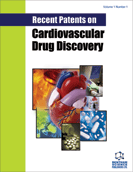Abstract
Cardiovascular disease (CVD) is the most critical global health threat, which contributes more than one third of global morbidity. CVD includes heart disease, vascular disease, atherosclerosis, stroke and hypertension. The most important independent risk factors for CVD include dyslipidemia along with hypertension, obesity, sedentary lifestyle, diabetes and chronic inflammation. These factors are directly regulated by diet, metabolism and physical activity. Diets rich in fat and carbohydrate coupled to sedentary lifestyles have contributed to the increase in dyslipidemia, type 2 diabetes, obesity and CVD in the world. Discovery of Peroxisome Proliferator Activated Receptors (PPARs) as a key regulator of metabolic pathways has led to significant insight into the mechanisms regulating these processes. Three PPAR subtypes, encoded by distinct genes, are designated as PPAR-α, PPAR-δ (also know as β) and PPAR-γ. PPARs act as nutritional sensors that regulate a variety of homeostatic functions including metabolism, inflammation and development. PPAR-α is the main metabolic regulator for catabolism whereas PPAR-γ regulates anabolism or storage. PPARs are expressed in the cardiovascular system such as endothelial cells, vascular smooth muscle cells and monocytes /macrophages. It has been shown that they play an important role in the modulation of inflammatory, fibrotic and hypertrophic responses. In 1997, a Glaxo patent described that Troglitazone (first PPAR-g ligand to reach market) reduced TNF-induced VCAM1 expression in HUVECs indicating the potential benefit in atherosclerosis. A series of patents from Eli Lilly and Dr. Reddys Laboratories Ltd. between 1999 and 2005 described a variety of PPAR-α and -α,γ dual ligands in a number of patents having glucose, triglyceride, cholesterol lowering, HDL elevating and body weight reducing activity. Patents from Metabolex and Tularik in 2001 and 2002 described the beneficial effects of SPPARM molecules for insulin resistance and diabetes, without showing concern on PPAR-g related side effects such as edema and body weight. GSK and Takeda described the potential effects of PPAR- δ modulators during 2001 to 2004 in few patents. Several clinical and preclinical studies have demonstrated the beneficial effects of PPAR ligands on various cardiovascular risk factors. This review intends to capture some of the key studies in this area as is described in some recent patents and literature.
Keywords: PPAR, cardiovascular disease, agonist, cholesterol, atherosclerosis, stroke, hypertension, dyslipidemia, diabetes, glucose
 2
2


